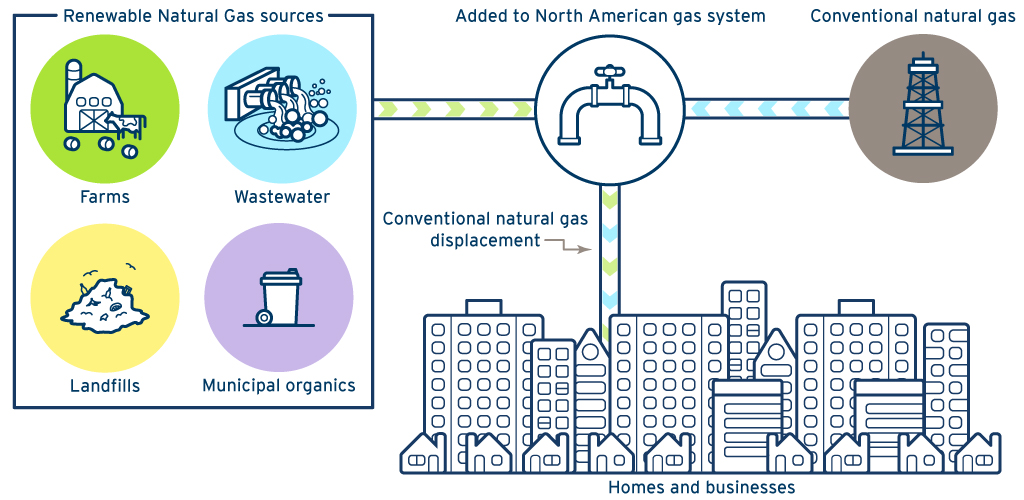About Renewable Natural Gas delivery
Renewable Natural Gas1 (RNG) is a lower carbon2 energy that can help our customers lower overall emissions. But how does it reach them? Let’s find out.
How is RNG introduced into our system?
North America’s natural gas systems are interconnected, so when RNG is added into the system, it mixes with conventional natural gas. This means that RNG cannot be directed to a specific location.
If you choose to sign up for the voluntary RNG program, there is RNG in the system with your name on it (figuratively) and the lower overall emissions that result from replacing conventional natural gas exist because of your support. The more RNG that is added to the system, the less conventional natural gas we’ll use, lowering overall emissions.

1Renewable Natural Gas (also called RNG or biomethane) is produced in a different manner than conventional natural gas. It is derived from biogas, which is produced from decomposing organic waste from landfills, agricultural waste and wastewater
from treatment facilities. The biogas is captured and cleaned to create RNG. When RNG is added to North America’s natural gas system, it mixes with conventional natural gas. This means we’re unable to direct RNG to a specific customer.
But the more RNG is added to the gas system, the less conventional natural gas is needed, thereby reducing the use of fossil fuels and overall greenhouse gas emissions.
2When compared to the lifecycle carbon intensity of conventional
natural gas. The burner tip emission factor of FortisBC’s current Renewable Natural Gas (also called RNG or biomethane) portfolio is 0.27 grams of carbon dioxide equivalent per megajoule of energy (gCO2e/MJ). FortisBC’s current
RNG portfolio lifecycle emissions for stationary combustion are -22 gCO2e/MJ. This is below B.C.’s lifecycle carbon intensity threshold of 30.8 gCO2e/MJ as set out in the 2024 Greenhouse Gas Reduction Regulation amendments.